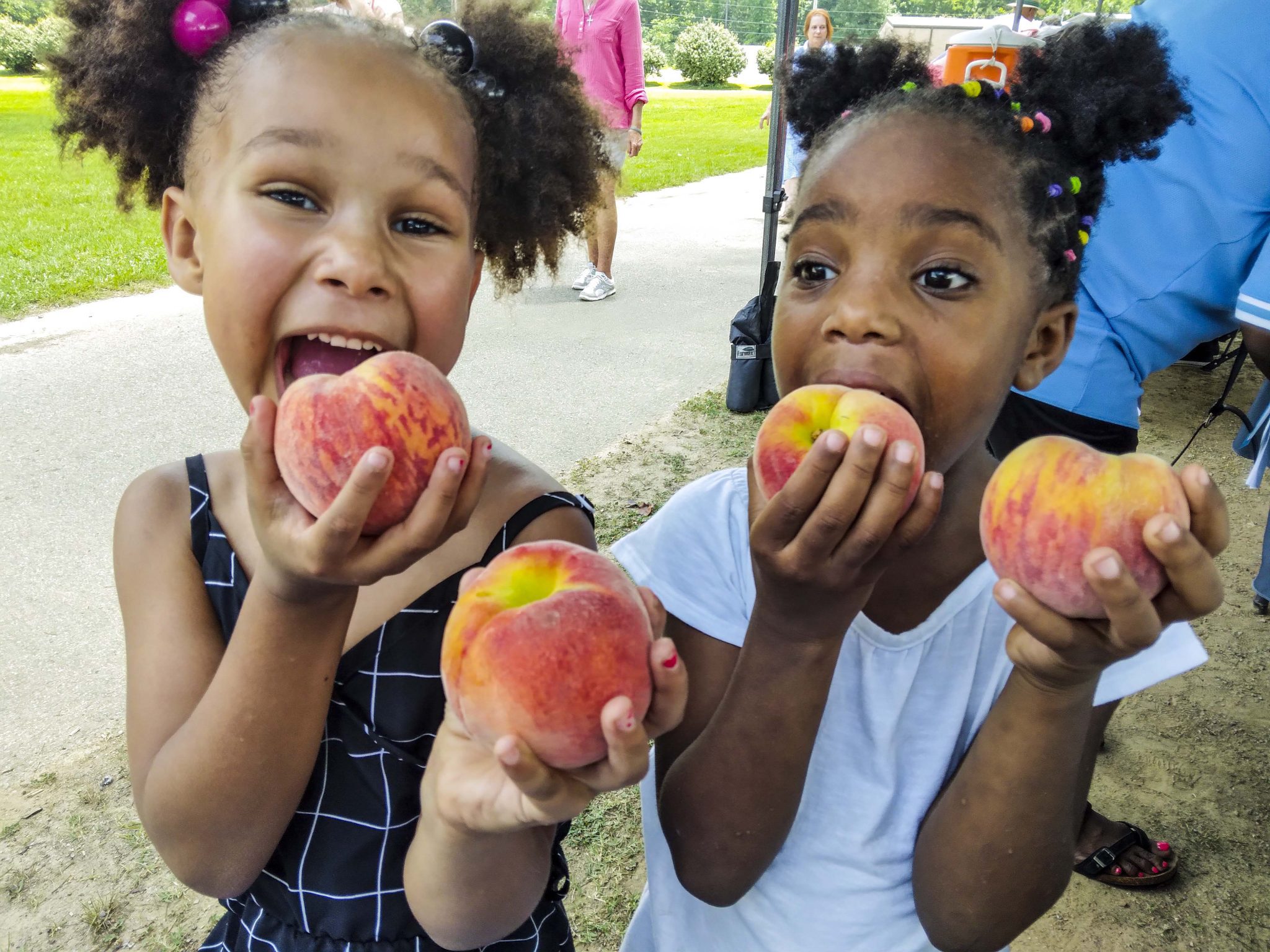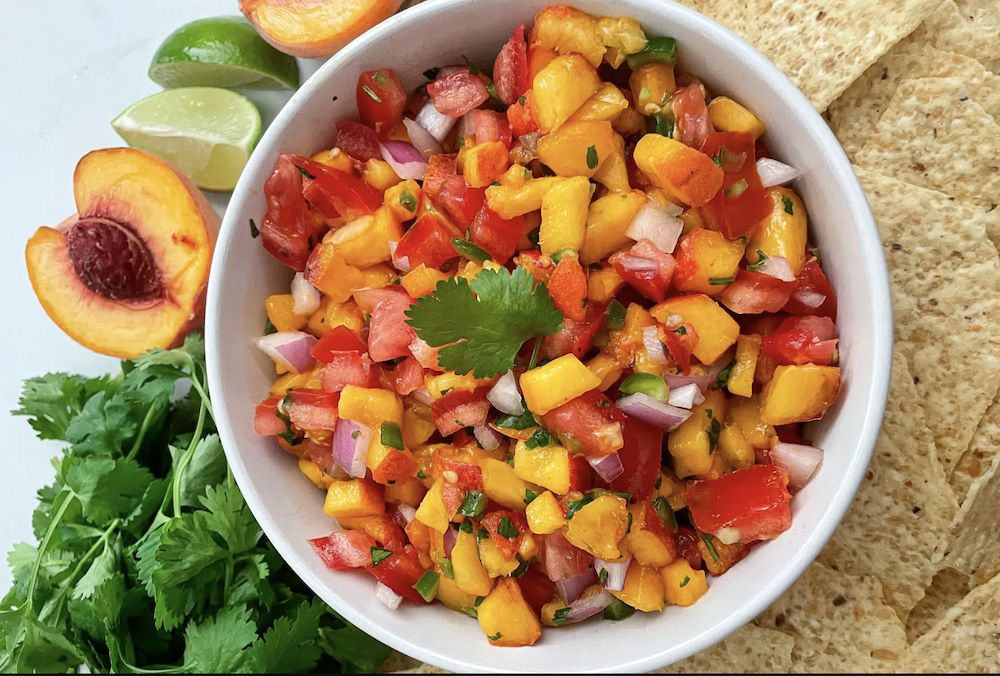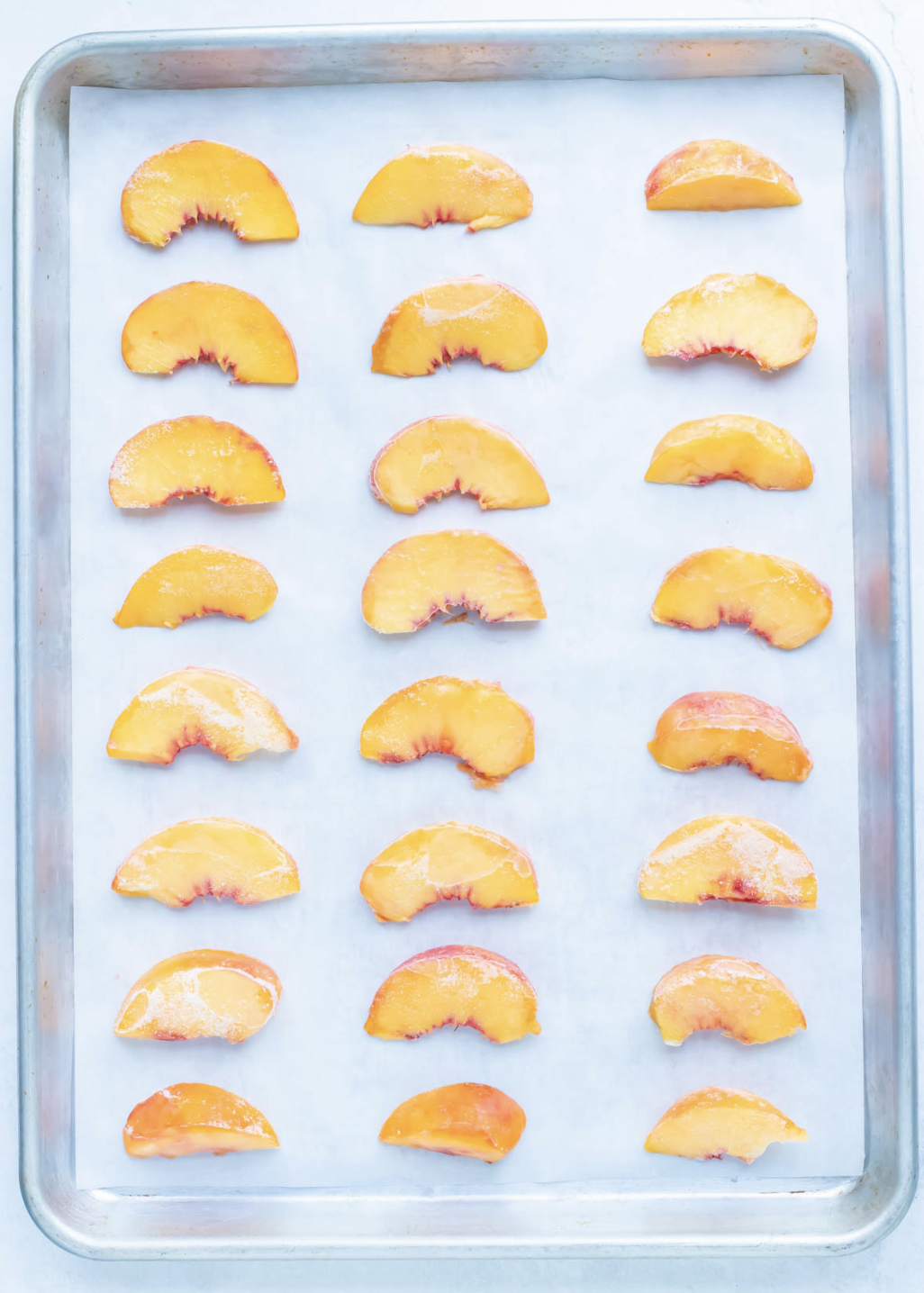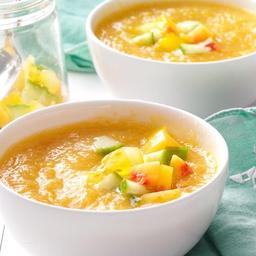
It’s peachy-keen that August is National Peach Month! Any reason to celebrate this sweet, juicy and healthy fruit is ok by me. Peaches are in season starting in May and peaking in August. One of the quintessential summer experiences is biting into a fresh peach (maybe a little juice runs down your chin?) I love all forms of fruit…frozen, dried or fresh. However, a fresh peach is special. It’s sunshine in a fruit.
The ancient Chinese Emperors agreed with me that peaches are superior. The earliest wild peaches (smaller and less sweet) were noted as early as 6000 BC in China. The Chinese domesticated it, and the fruit became a favorite luxury food of the Chinese Emperors. The Persians then brought the fruit to the Roman Empire where it was called the Persian Apple. In French, it was named “pêche” and in English, it became “peach”. Peach propagation came to the Americas with the earliest explorers.
Today, China produces 58% of the peaches globally and Italy is a close second. The United States supplies about a quarter of the world’s total supply. There are over 2000 varieties of peaches. Peaches have different flesh colors of yellow, white, and less common, red. There are two basic types of peaches: freestone and clingstone. If you want to cut your peach and halve it, the freestone will be the type to choose. Clingstones cling to their pit making them harder to slice. They are available earlier in the summer months and the freestones later through August.
I remember the first time I tried peaches in salsa. My friend took a jar of her favorite salsa and added a chopped peach. Oh wow, did it make that salsa special. I love to do this in the middle of winter with some thawed-from-frozen peaches to capture a little summer sunshine during the cold of winter.
I love adding fresh peaches into my menus this time of year. Peaches aren’t just for desserts like pie and cobbler…although I’m a fan of all peach desserts, but I love to use them in many of my main dishes. Take advantage of the flavor of peaches by adding slices to a salad, blending up for a special soup and layering in a sandwich. My favorite way to cook with peaches is to grill them. They perfectly complement many proteins like pork, chicken and shrimp.
Take Care Of Your Beautiful Peaches
Be choosy: Peaches ripen quickly (3-4 days on counter) so unless you want to bite into one right away, choose one that isn’t too soft to touch.
Clean: Use a vinegar solution of 1 cup of distilled white vinegar or apple cider vinegar with 4 cups of water. Wash your fruit in the solution for 2-3 minutes, rinse and pat dry. Make sure they are thoroughly dry before storing on your counter or in the fridge.
Quick Ripe: If you want your peaches to hurry up and ripen, put them in a brown paper bag, laid flat, stem side down and not touching. Close the bag to trap in the ethylene gas.
Ripe and Ready: If your peaches are ripe but you aren’t ready to use them, place them in the refrigerator or freeze them. The cold of the refrigerator will keep them good for up to 5 days.
Freeze for Future: To freeze, you will need to remove the pits, toss the slices in lemon juice and let sit a few minutes. Lay out on baking sheet with slices separated and put in freezer. Once frozen transfer them to a freezer bag and use for up to 9 months.
Peachy Fun Facts To Share at the Dinner Table:
- Georgia, known as the Peach State, grows 130 million pounds of the fruit annually; however, South Carolina and California produce even more each year.
- Peach trees produce fruit for about 12 years.
- The little donut peach is the sweetest.
- Peaches and nectarines are related stone fruits. Nectarines are a type of fuzz-free peach.
- The fuzz on a peach is a defense mechanism protecting against animals, insects, disease and even bad weather conditions.
- The pit is mildly toxic so don’t consume it or give to animals.
- In China, the peach is a symbol of good luck, protection, and longevity.
- Koreans consider peaches a source of “good energy” that can help to drive away evil spirits.
Check Out These Peachy Recipes



